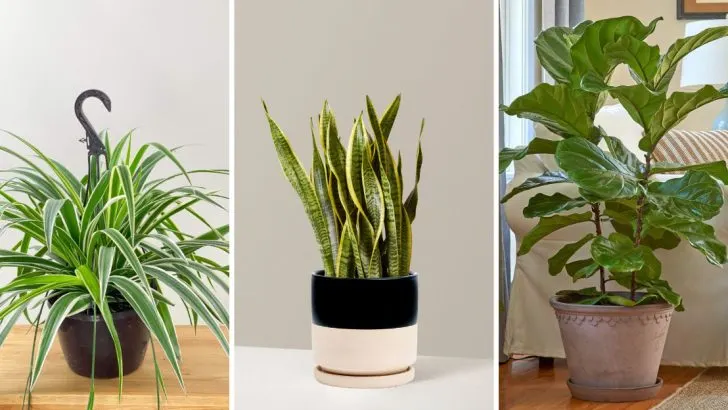You might not think twice about the plants lining the halls of an airport or sitting quietly in the corners of a government building, but those choices are rarely random. There’s usually a solid reason behind which species make the cut in high-security or high-traffic spaces—things like air quality, low maintenance, and even psychological effects all come into play.
Some of these plants are chosen for their durability, others for how they influence mood or behavior. And in places like prisons or government facilities, those details matter more than you might expect. It’s not just about looks—it’s about function, too.
Spider Plant
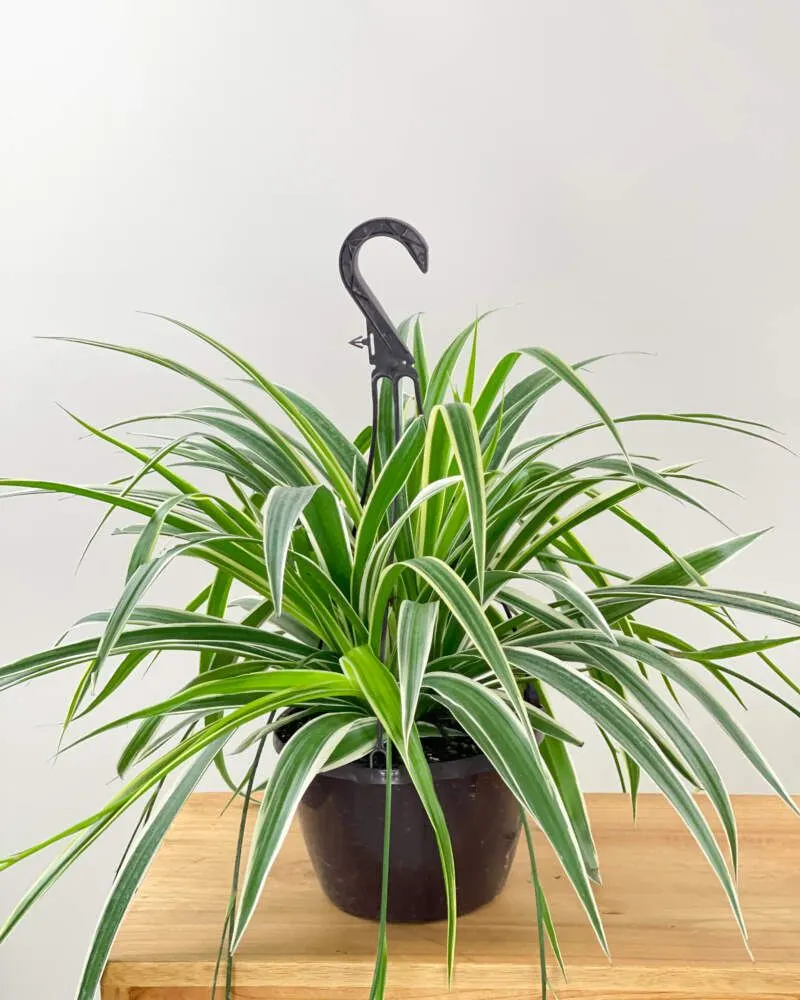
Known for its air-purifying qualities, the spider plant is a staple in many institutions. Its arching leaves and small white flowers bring a touch of softness to sterile environments. This plant is not only visually appealing but also incredibly resilient, making it perfect for places that require low maintenance.
Spider plants thrive in indirect sunlight and can tolerate a variety of growing conditions. Their ability to remove toxins such as formaldehyde makes them ideal for high-traffic areas. A fun fact: they are known to be safe for pets, adding to their versatility in indoor settings.
Snake Plant

With its bold, upright leaves, the snake plant is a striking addition to any room. Known for its ability to convert CO2 into oxygen at night, it’s a favorite in spaces that need fresh air.
This plant is nearly indestructible, thriving in both low light and direct sunlight. As a bonus, it filters toxins such as benzene and xylene. Its minimal watering needs make it a reliable choice for busy environments. A quirky tidbit: snake plants are also called mother-in-law’s tongue, thanks to their sharp leaves.
Peace Lily

The peace lily is not only beautiful but also functional, known for its ability to improve air quality. Its striking white flowers contrast beautifully with its dark leaves, making it an elegant choice for formal settings.
It’s effective at removing pollutants like ammonia and trichloroethylene. Peace lilies thrive in low light, making them perfect for spaces with limited natural light. A gentle reminder: while they’re safe to touch, peace lilies can be toxic to pets if ingested. This plant truly stands out with its serene presence.
Boston Fern

Boston ferns are renowned for their lush appearance and exceptional air-purifying capabilities. Their feather-like fronds add a touch of elegance and charm to any space, making them desirable in high-traffic areas.
These ferns thrive in humid conditions and can help maintain indoor humidity levels, which is beneficial for institutional settings. They absorb pollutants such as formaldehyde, making the air cleaner. A fun fact: Boston ferns are believed to have been around since prehistoric times, bringing a touch of history to modern interiors.
Aloe Vera

Aloe vera, with its fleshy, spiky leaves, is not only a visual delight but also a medicinal powerhouse. Known for soothing burns and skin irritations, its gel is a must-have for emergencies.
Aloe vera plants are easy to care for, requiring minimal water and thriving in sunny spots. Beyond its healing properties, aloe vera purifies the air by removing toxins like formaldehyde. A curious fact: the plant is a symbol of healing and protection in many cultures, making it a thoughtful addition to institutional spaces.
Rubber Plant

The rubber plant stands out with its broad, glossy leaves and impressive height, making it a striking focal point in large spaces. It’s known for its ability to eliminate airborne toxins, particularly formaldehyde.
Caring for a rubber plant is simple; it needs bright, indirect light and occasional watering. Its robust nature and air-purifying qualities make it a preferred choice for institutional environments. An interesting tidbit: the rubber plant gets its name from the latex sap within its leaves, historically used to make rubber.
ZZ Plant

The ZZ plant, with its thick, waxy leaves, is a testament to resilience. It’s a favorite in offices and government buildings due to its ability to thrive in low-light conditions and withstand neglect.
This plant is excellent at removing toxins from the air, making it both functional and attractive. Its low-maintenance nature and striking appearance make it ideal for busy environments. A quirky fact: the plant’s scientific name, Zamioculcas zamiifolia, is quite the tongue-twister, often shortened to simply “ZZ.”
Philodendron

Philodendrons are beloved for their heart-shaped leaves and vibrant green foliage. These plants are incredibly easy to care for, making them perfect for institutional settings.
They thrive in various lighting conditions and help remove harmful toxins like formaldehyde from the air. Philodendrons are fast-growing and can cascade elegantly from pots, adding a touch of nature to any room. A little-known tidbit: the name “philodendron” comes from Greek, meaning “tree lover”, a nod to its climbing nature.
Fiddle Leaf Fig
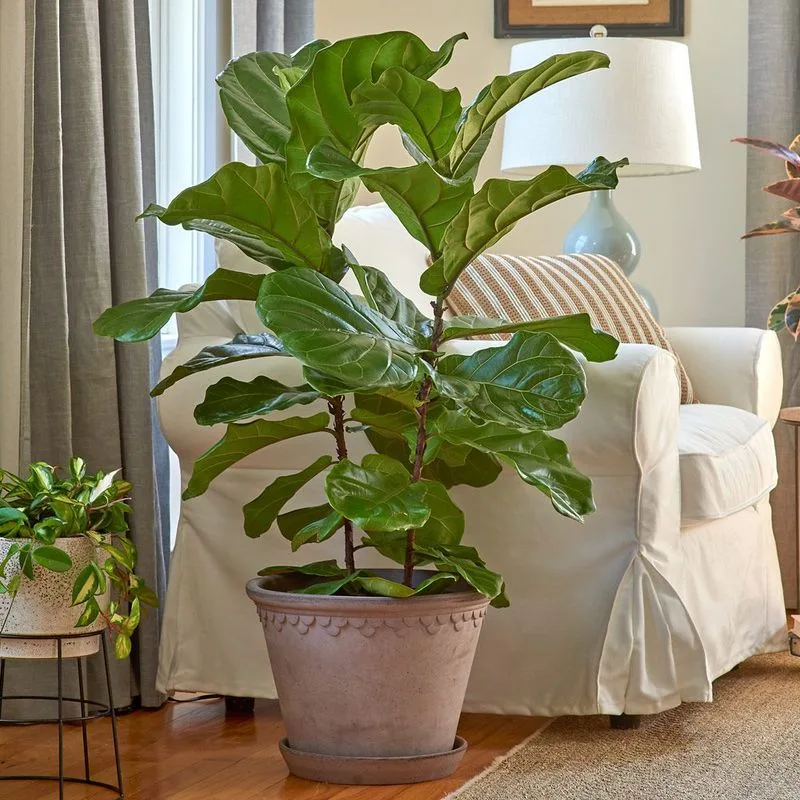
The fiddle leaf fig, with its large, violin-shaped leaves, is a dramatic addition to any space. It’s a popular choice in stylish offices and public areas due to its bold appearance.
This plant thrives in bright, indirect light and can reach impressive heights, making it a statement piece. While not known for air-purifying, its aesthetic appeal is unrivaled. A fun fact: the fiddle leaf fig has become an icon in interior design, often featured in trendy homes and magazines.
English Ivy

English ivy, with its trailing vines and lush leaves, is a classic choice for adding greenery to vertical spaces. It’s known for its ability to reduce airborne mold, making it valuable in health-conscious environments.
Ivy thrives in a variety of conditions, including low light, and can be trained to climb trellises or cascade from pots. A historical tidbit: English ivy has been used in traditional medicine for centuries, believed to ward off evil spirits. Its timeless appeal continues to enhance modern interiors.
Bamboo Palm

The bamboo palm is a symbol of tropical elegance, with its slender fronds and graceful stature. It’s a popular choice for bringing a touch of the tropics to indoor spaces.
This palm is excellent for improving air quality, removing toxins like formaldehyde and benzene. It thrives in indirect light and requires regular watering, making it a calming presence in busy areas. An interesting note: bamboo palms are often used in feng shui to encourage positive energy and harmony.
Pothos
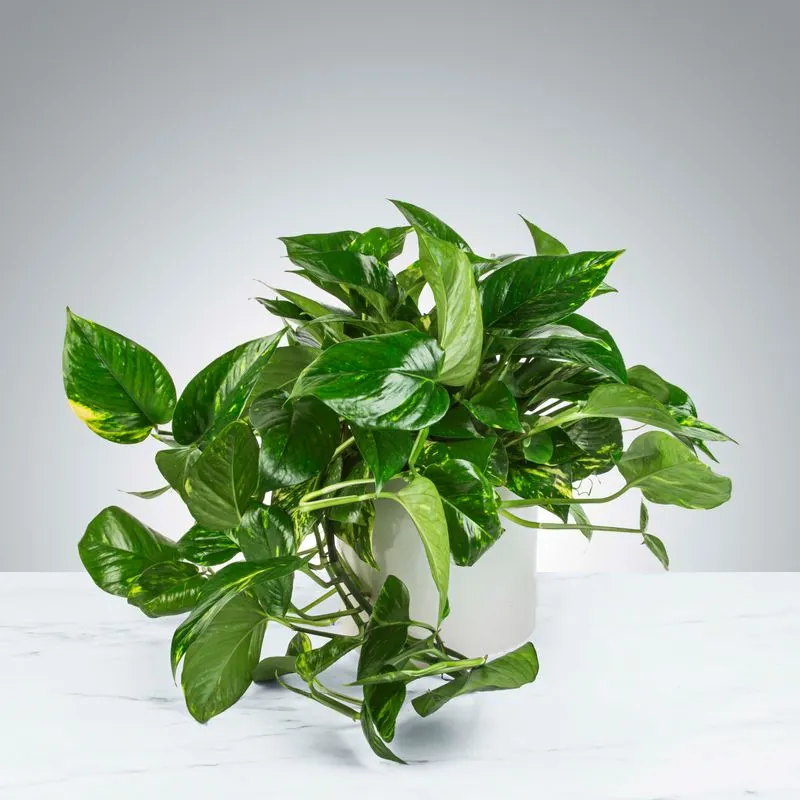
Pothos, with its cascading vines and variegated leaves, is both beautiful and forgiving. This plant is incredibly hardy, thriving in low light and surviving irregular watering.
It’s a natural air purifier, effective at removing toxins like formaldehyde and carbon monoxide. Pothos can grow long, trailing vines, making it perfect for hanging baskets or shelves. A fun fact: pothos is often called “devil’s ivy” because it’s nearly impossible to kill, and stays green even in the dark.
Dracaena

Dracaena plants are known for their striking leaf patterns and easy-care nature. Their long, slender leaves with variegated colors make them visually appealing in any setting.
These plants excel at removing indoor pollutants such as formaldehyde and benzene. Dracaenas thrive in a variety of light conditions and require minimal watering, making them perfect for busy institutional spaces. A quirky fact: the name “dracaena” comes from the ancient Greek word for “female dragon,” inspired by the plant’s dramatic appearance.
Chinese Evergreen

Chinese evergreens are prized for their attractive, silver-green leaves and robust nature. They’re perfect for adding a touch of elegance to indoor environments.
These plants thrive in low to medium light and are excellent at removing pollutants such as formaldehyde and benzene. Their low maintenance needs make them ideal for busy settings. A delightful tidbit: Chinese evergreens are said to bring luck and prosperity, making them a thoughtful addition to any space.
Jade Plant
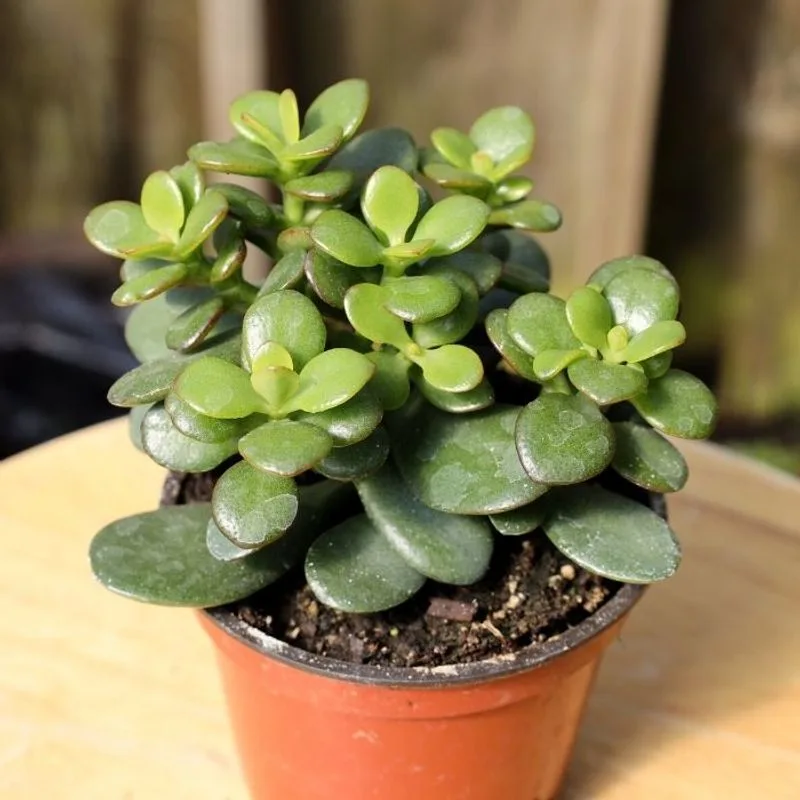
The jade plant, with its thick, round leaves and tree-like appearance, is a symbol of good fortune and prosperity. It’s often found in offices and public spaces for its attractive look and easy care.
Jade plants thrive in bright light and require minimal watering, making them a low-maintenance choice for busy environments. While not primarily known for air purification, their visual appeal is undeniable. A fun fact: in feng shui practices, jade plants are believed to attract wealth and success.
Kentia Palm
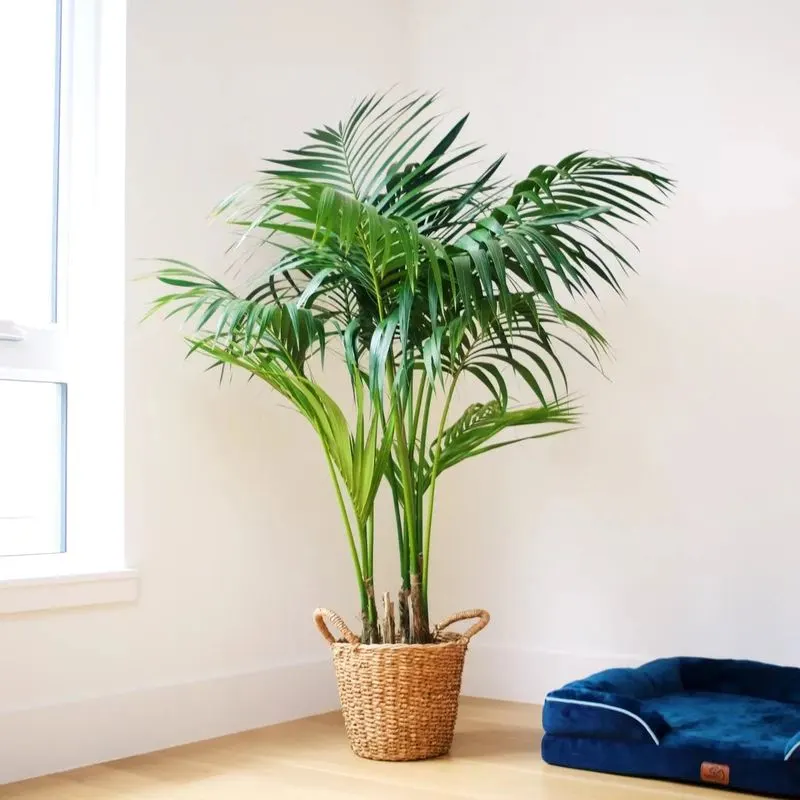
The Kentia palm, with its feathery fronds and graceful presence, adds a touch of tropical elegance to any indoor space. It’s a favorite for its ability to thrive in low light and its low maintenance needs.
This palm is known for its air-purifying qualities, removing toxins such as formaldehyde. Its ability to grow tall without much care makes it perfect for large, open areas. A charming fact: the Kentia palm is often associated with luxury and was a popular choice in Victorian-era homes.

